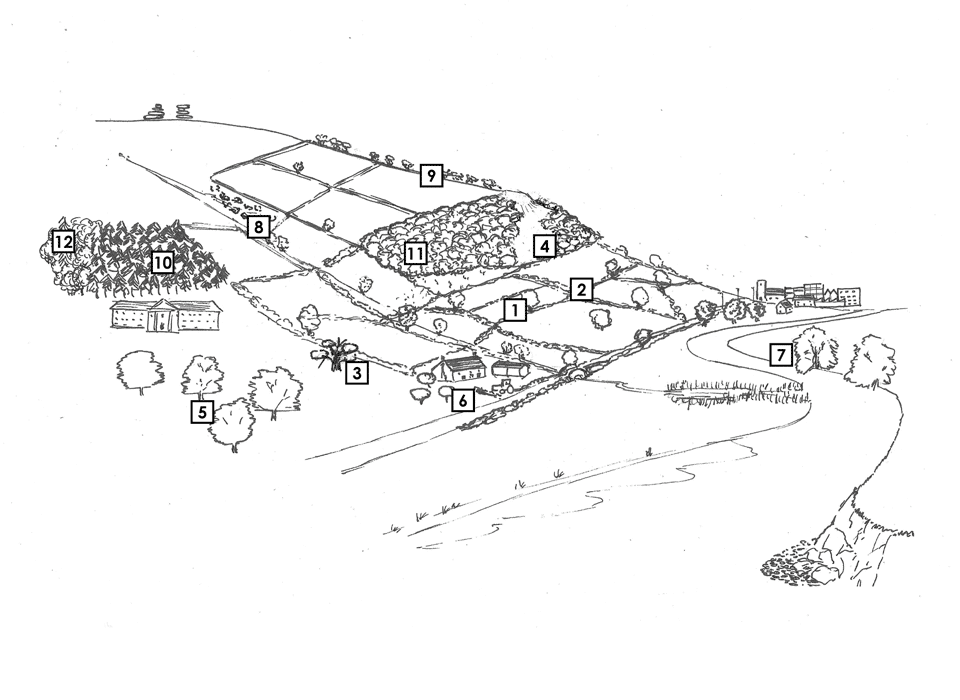
Hedgerow Trees
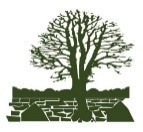
These occur when hedge plants are allowed to grow out. In upland areas they are often beech, and create avenues alongside roads or fields. In lower areas, hedgerow trees are most commonly oak or ash, but may be other species too.
Unfortunately many ash trees are now dying as a result of Ash Dieback disease
Hedges and hedgebanks
These are some of Devon’s most characteristic features. There are many local variations in species and in hedgebank construction.
Generally hedges on lower land are older (some date back to medieval times) whilst most of the regular-shaped fields in upland areas date from the 18th or 19th Century, when common land and moorland was enclosed for agriculture. As well as separating fields, hedges can function as wildlife corridors, and as barriers to reduce flooding and soil loss
Veteran Trees
Veteran trees are old relative to others of the same species. Their characteristics include a large girth for the species, hollow or hollowing trunk, and a large quantity of dead wood in the canopy. They are rich habitats supporting a great variety of insects, birds and fungi. In Devon they usually occur in woodland, hedgerows or parkland
Ancient trees are those which reach the ancient life stage, which very few trees of any species do
Copses

These may be prominent landscape features (for example isolated hill-top clumps of beech trees) or clusters of trees which are less obvious within the landscape
Parkland

Parkland or woodpasture (grazed woodland) usually occurs around historic country houses. It has a designed feel, and planted features may include avenues, tree clumps and isolated specimen trees. Devon has many such estates of varying sizes
Orchards
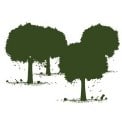
Historically orchards were found across Devon, although some areas had particularly high concentrations. Extensive traditional apple orchards still remain in some parts of the County. Smaller orchards are often associated with farmhouses
Riparian (Riverside) Trees
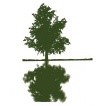
These are trees associated with rivers and watercourses, with typical species including willow and alder. Tree roots help to bind riverbanks, and provide shade for fish. Wet woodland occurs alongside streams or in valley bottoms. It is an important habitat, and helps to slow water flow and reduce downstream flooding
Scrub
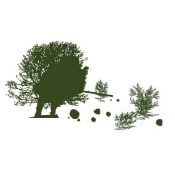
Scrub includes low-growing tree species such as gorse and hawthorn. It occurs naturally in many different parts of the landscape, but particularly in upland areas, and provides habitat for a range of insect and bird species.
Shelterbelts
These generally occur in upland areas, and comprise straight lines of dense trees to provide shelter from the wind for livestock or people. They are traditionally of beech, but more recently non-native conifers have been used.
Coniferous woodland planted on former Ancient Woodland site
Some of our Ancient Woodland was converted to productive conifer over the last century. These are known as Plantations on Ancient Woodland Sites (PAWS), which through careful management can be restored to native species making them more ecologically rich. This can take time as it needs to be done sensitively to ensure the remnant features are not lost in transition.
Deciduous Woodland
Most trees in deciduous woodlands are native species, such as oak, ash, field maple, cherry, holly and yew. Some of Devon’s deciduous woodland is ‘Ancient Semi-Natural Woodland’ (i.e. has been wooded continuously since 1600AD). Ancient Semi-Natural Woodland often has a diversity of tree species, but also rich undisturbed soils which support ground flora such as bluebells, wild garlic, primroses and fungi.
It is one of the UK’s most biodiverse habitats, but faces threats from development, land use change and pollution, as well as tree diseases and climate change
Productive woodland
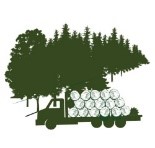
In the 20th Century push for the country to be less dependent on imported timber, productive forestry was managed as intensive monocultures. However, in recent years a much greater diversity of productive woodlands have been planted, including broadleaf species in traditional management (for example coppicing and pollarding). Increasingly, productive woodlands are likely to comprise a mixture of coniferous and broadleaved species, and in the future are likely to include a greater diversity of tree species, including for example Californian redwood. They may also be accessible for recreation.